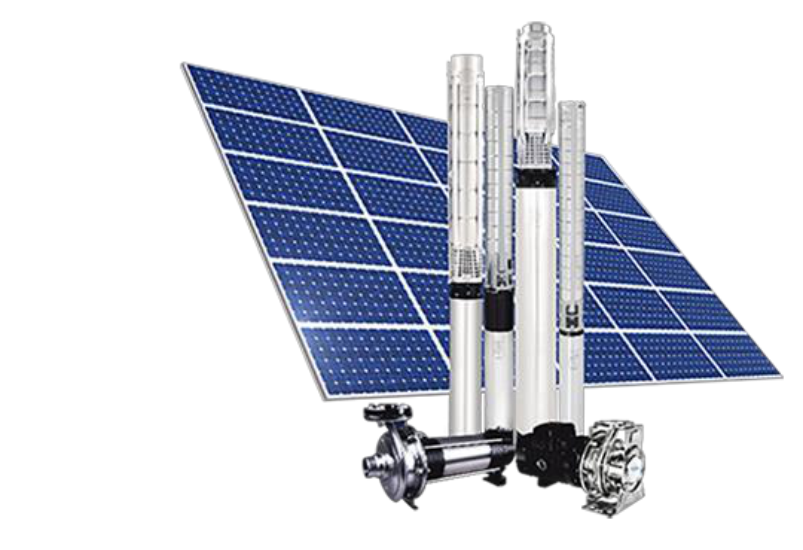
Solar-powered Water pumps run on electricity generated by photovoltaic panels or the radiated thermal energy available from collected sunlight as opposed to grid electricity or diesel run water pumps. The operation of solar powered pumps is more economical mainly due to the lower operation and maintenance costs and has less environmental impact than pumps powered by an internal combustion engine (ICE). Solar pumps are useful where grid electricity is unavailable and alternative sources (in particular wind) do not provide sufficient energy.
A photovoltaic solar powered pump system has three parts:
The solar panels make up most (up to 80%) of the systems cost. The size of the PV-system is directly dependent on the size of the pump, the amount of water that is required (m³/hr) and the solar irradiance available.
The purpose of the controller is twofold. Firstly, it matches the output power that the pump receives with the input power available from the solar panels. Secondly, a controller usually provides a low voltage protection whereby the system is switched off, if the voltage is too low or too high for the operating voltage range of thepump. This increases the lifetime of the pump thus reducing the need for maintenance. Other ancillary functions include automatically shutting down the system when water source level is low or when the storage tank is full, regulating water output pressure, blending power input between the solar panels and an alternate power source such as the grid or a petrol generator, and remotely monitoring and managing the system through an online portal offered as a cloud service by the manufacturer.
Voltage of the solar pump motors can be AC (alternating current) or DC (direct current). Direct current motors are used for small to medium applications up to about 4 kW rating, and are suitable for applications such as garden fountains, landscaping, drinking water for livestock, or small irrigation projects. Since DC systems tend to have overall higher efficiency levels than AC pumps of a similar size, size, the costs are reduced as smaller solar panels can be used.
Finally, if an alternating current solar pump is used, an inverter is necessary that changes the direct current from the solar panels into alternating current for the pump.The supported power range of inverters extends from 0.15 to 55 kW and can be used for larger irrigation systems.

GRANDSOL Solar Water Pumping System comprises of an array of Solar Photo Voltaic Modules, Pumpset, Solar Pump Controller, Module Mounting Structure, Lighting Arrester and Earthing Kit.
Solar Pump Controller converts DC Power Supply Generated by PV Modules to AC Supply along with Variable Frequency Drive for optimizing the speed control of the pumpset. Function of MPPT (Maximum Power Point Tracking) maximizes the system output efficiency.
Module Mounting structure is completely Hot Dip Galvanize, having Fixed Structures, Manual Tracking System with Dual Axis provision (Auto tracking is an optional).
A Lightning Arrestor is a device used on electrical power systems to protect the insulation and conductors of the system from the damaging effects of lightning.
Earthing kits are composed of two main components, a clamp and a cable. The clamp will be screwed on a coaxial cable and in case of lightning strokes in the installation, the voltage will be diverted over a ripple in teh clamp with the combined cable and will be earthed / grounded by this way.

Brief Technical Specifications GRANDSOL Solar Water Pump
